Alternative Fuels Drive Existing Aircraft Modifications and New Aircraft Designs – Twenty Examples
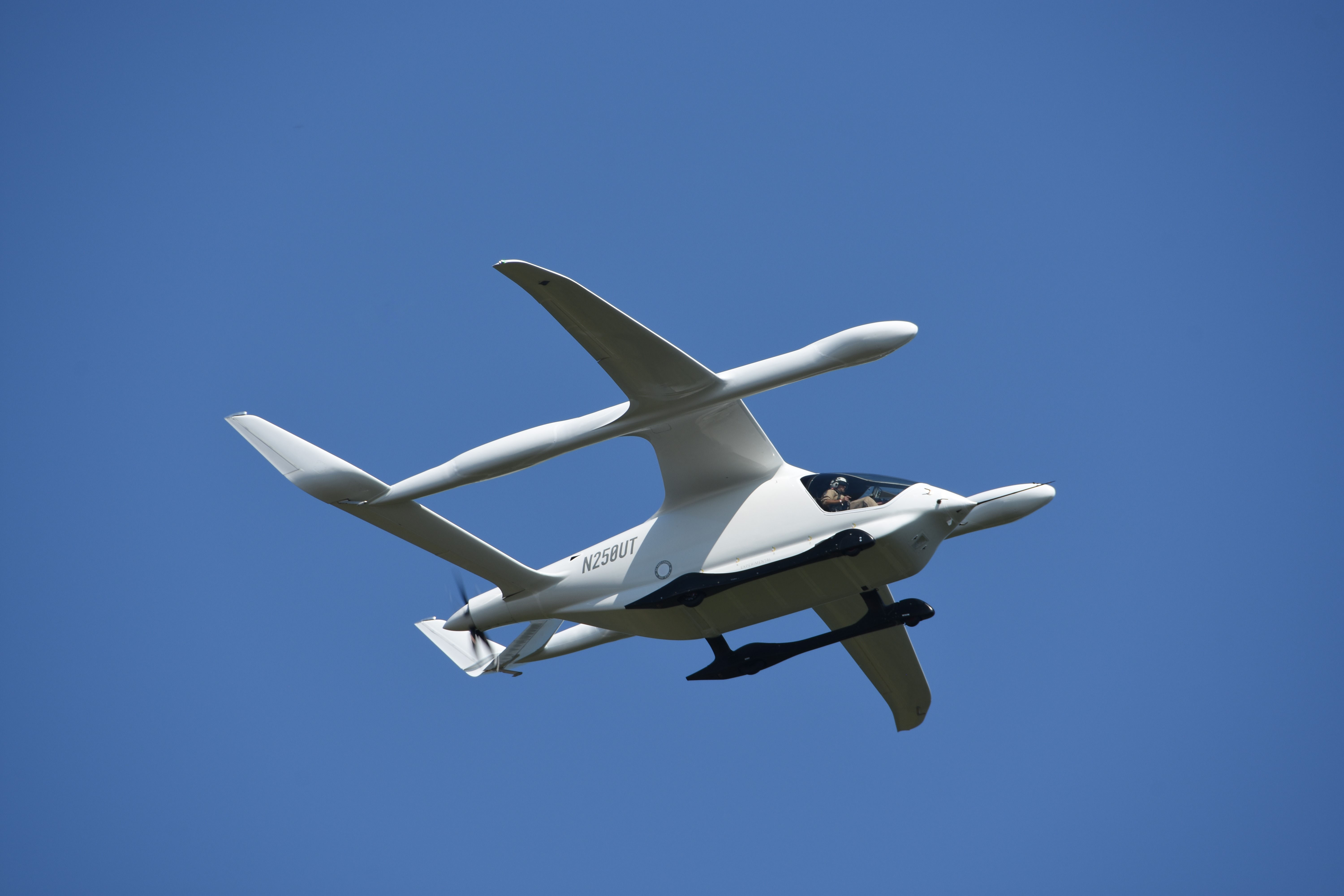
BETA Technologies ALIA CX300
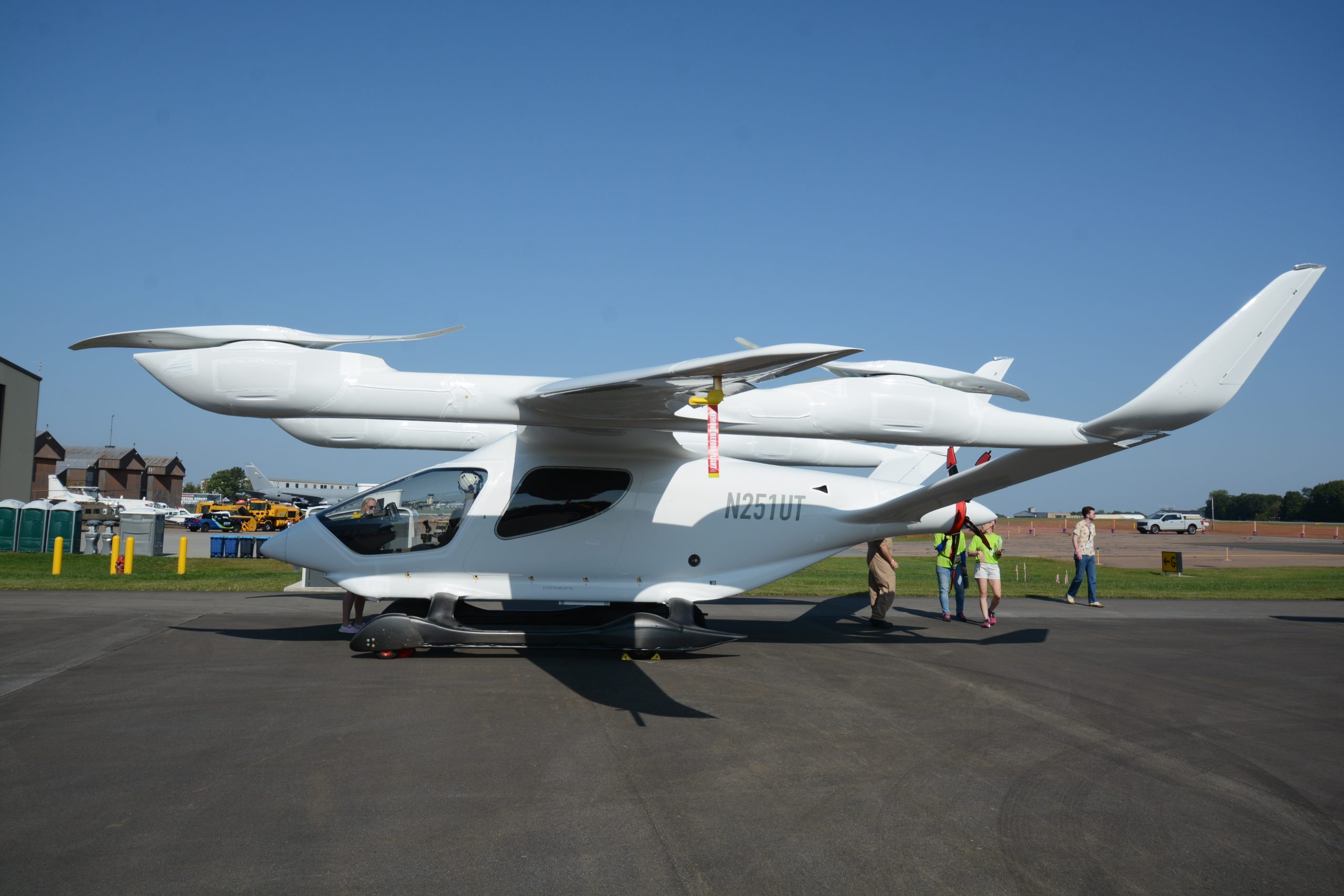
BETA Technologies ALIA A250 VTOL
Story and photos by Ken Kula, unless otherwise noted
Burlington, Vermont’s BETA Technologies is “an aerospace company manufacturing electric flight”. The company describes itself as “pilots who build planes” and adds that its focus is “electric aerospace manufacturing”. The company is headquartered in Vermont where its research and development, and production lineis housed in a new facility next to some Cold-War interceptor alert hangars. A pair of similar, but at the same time very different aircraft are being manufactured with the same basic airframe design. The ALIA A250 will be a conventional takeoff and landing all-electric aircraft with a capacity for 5 passengers, or 200 cubic feet of cargo. The ALIA CX300 is an all-electric vertical takeoff and landing version.
The company reports that some of the ALIA aircraft’s aerodynamic design was computer-patterned after the Arctic Tern bird. Flight test operations occur at the sprawling Plattsburgh International Airport, a quick 15-minute flight over Lake Champlain in New York State. Initial customer deliveries will commence in 2025.
The company offers a full complement of services for support of their aircraft, which includes the design and building of all of their electric motors and power charging units. The aircraft battery charging unit plugs are compatible with automobile charger plugs too. Flight training services are administered at their Vermont building in their Thunderdome flight simulators, which were built in collaboration with the X-Plane company.
A mobile “roadshow” houses a pair of simulators and other training devices. The Airstream trailer is named the “MobileDome”, and is used to attract technical students to the aviation company. Virtual training and the Thunderdome full-scale simulator is also available. It is interesting to note that the company offers pilot training for all of its employees, in keeping with its aforementioned description of the company’s identity – pilots who build planes.
The origins of BETA Technologies are rooted in eVTOL research; the company’s first eVTOL aircraft was named AVA-XC, a record-setting converted Lancair ES. It was a reconfigured fixed wing, 4000-pound aircraft with eight early electric motors mounted in an over-under configuration on the plane’s wingtips and extended horizontal (tail) stabilizers.
In the last two years, BETA Technologies has taken part in military exercises with the U. S.’s Air Mobility Command, Air Combat Command and Air National Guard. BETA Technologies has an international reach. Air New Zealand has chosen the ALIA 250 conventionally powered aircraft to lead their “Mission NextGen Aircraft” program and for air cargo. NZ Post plans to use the same aircraft type for mail delivery across the country and New Zealand Air Ambulance has recently ordered several more examples. Norway’s Bristow Helicopter will test a CX300 aircraft in that country this summer, moving cargo between Stavanger and Bergen.

Volt Aero Cassio 330. Ken Kula photo
The VoltAero Cassio series of electric and hybrid electric aircraft will eventually grow into several airframes with 5 to 12 passenger seats. Besides being produced for air taxi, charter and private transportation, they are well suited for “cargo, postal delivery and medical evacuation” roles.
The first model to be produced will be the Cassio 330, equipped to carry 5 people. It is powered by a hybrid system with a Kawasaki internal combustion engine and a Safran ENGINeUS electric motor. The electric motor will be used during takeoff, landing and for short-ranged flights of 100 miles or so. Use of the hybrid combination comes into play on longer flights, where the Kawasaki engine will serve as a charger for the batteries of the Safran motor. The Kawasaki engine doubles as an emergency powerplant if the battery/electric motor fails. Interestingly, Kawasaki has research a hydrogen motor to replace the internal combustion engine for a cleaner, greener operation.
Further developments will yield a 6-seat Cassio 480 and 10 to 12-seat Cassio 600. The numbers after the Cassio name reflect the amount of kilowatts of power each aircraft/motor combination provides.
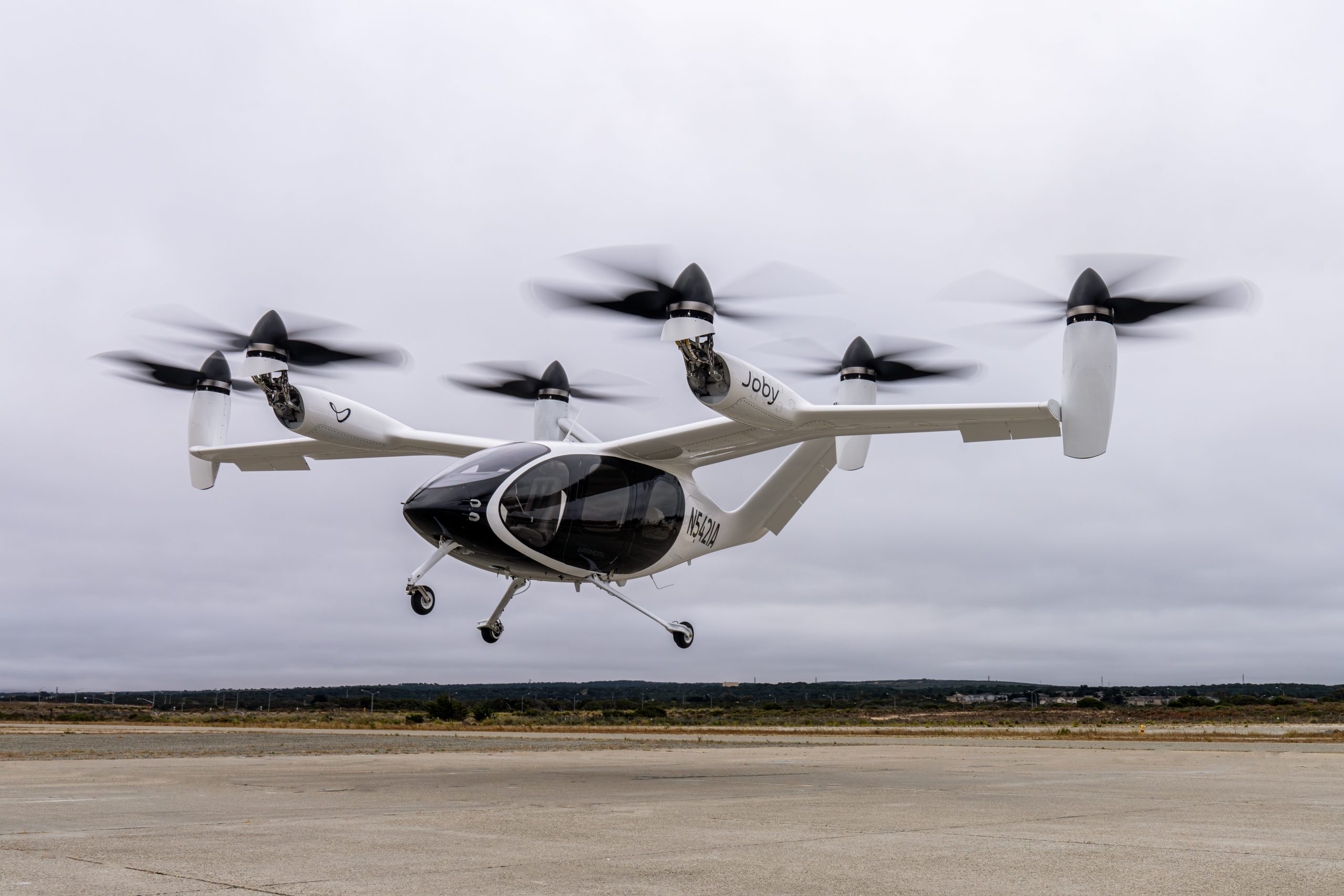
Joby Aviation S4
Joby Aviation is headquartered in Santa Cruz, California. Other facilities include a main test and manufacturing facility in Marina, California. The company has been involved with testing many electric air taxi aircraft and components for over a decade. In 2012 Joby began a series of NASA-sponsored projects centering on electric-powered transport aircraft, flying a subscale demonstrator aircraft in 2015 and then their full-scale demonstrator in 2017. In 2019, the company flew a pre-production prototype of an airborne taxi and the following year saw the U. S. Air Force issued Joby an eVTOL airworthiness approval for their aircraft design, one of which would be based at Edwards AFB for testing. In 2022, Joby received their FAA Part 135 Air Carrier Certificate, allowing the company to further develop their commercial air taxi plans.
Joby has cemented plans for use of their air taxi aircraft with Delta Airlines and Uber (through the acquisition of the Elevate division). They’ve signed agreements with the governments of Dubai and the United Arab Emirates for air taxi systems and has demonstrated airborne logistics support for the U. S. Air Force too. The company has flown their first production aircraft in 2023 and has approval from the FAA for a Part 141 Flight Academy too. Joby has partnered with Delta Airlines for developing an electrically-powered air taxi service. An additional note is that the company has seen Toyota become a “strategic investor” for processes like factory design and production.
In July 2024, a demonstrator aircraft achieved a 523-mile flight using a hybrid battery and hydrogen fuel cell arrangement.
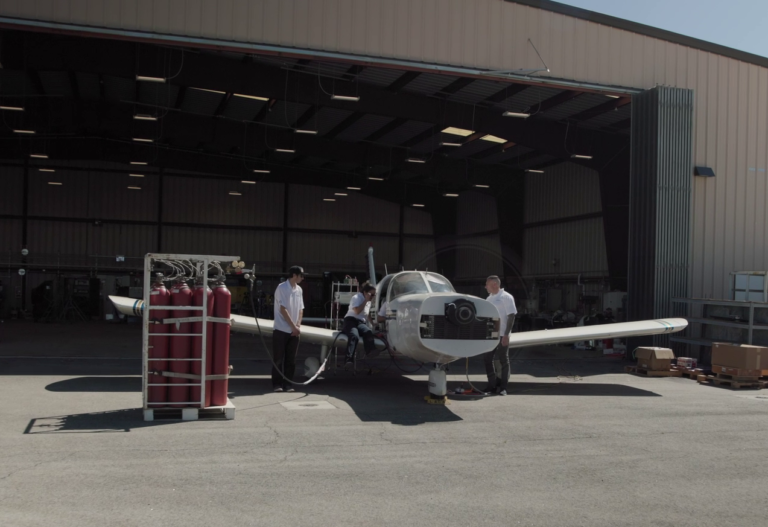
Hydroplane Ltd. Aircraft being serviced with hydrogen – note the red cylinders on the left side of the photo. Hydroplane Ltd. photo
Hydroplane Ltd. Is a California-based company developing hydrogen-powered fuel cells to provide green energy for aircraft. Using fuel cells that convert hydrogen into electric power are another way to cut carbon emissions, with only water as a by-product of the fuel cell operation. Battery powered aircraft are range-limited and incur payload penalties when utilizing large batteries. Fuel cells are lighter in weight and offer extended range when compared to pure battery power.
Hydroplane ltd. has won awards and contracts from the U. S. Air Force, Navy and Army branches. The company’s Protium Aircraft System was tested in a light aircraft in Lancaster, California in 2023.

BRM AERO B23 Energic. Bristell photo
The Bristell B23 Energic is built in the Czech Republic and powered by a Swiss-built electric motor built by H55, a spinoff company from the Solar Impulse team headed by Executive Chairman Andre Borschberg. The B23 Energic will have a one hour endurance with a 10 minute reserve, aimed for the flight training market. The estimated cost per flying hour is $7.00, based upon a current electricity cost. Production deliveries begin in 2026; the first North American delivery is slated for 2027.
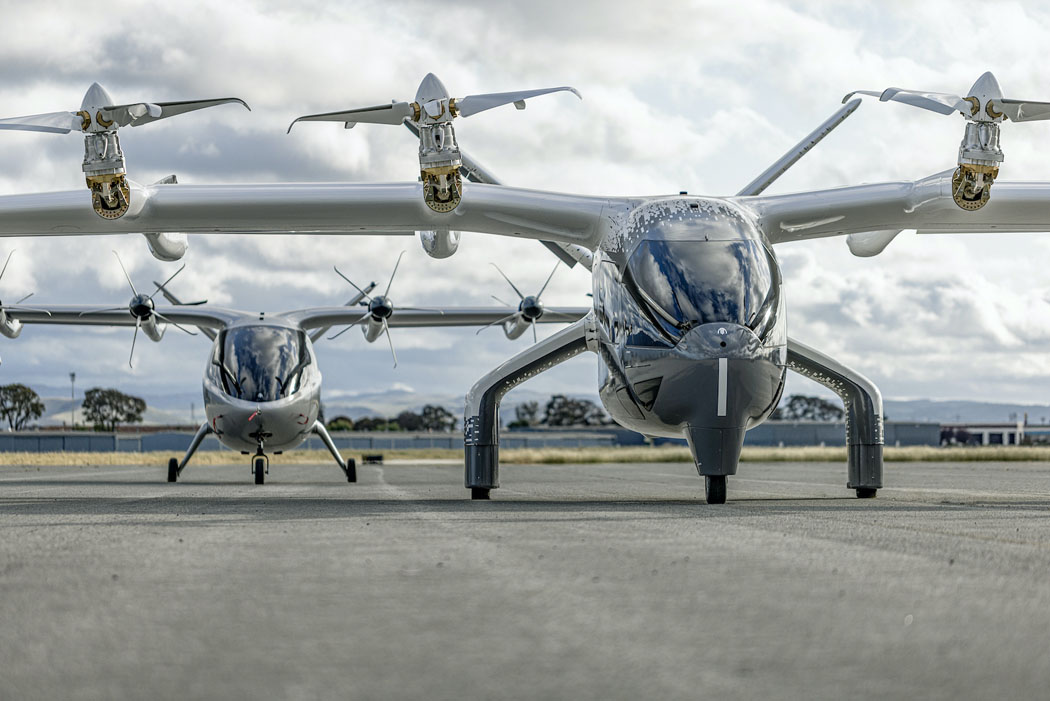
Archer Midnight eVTOL (foreground) and earlier Maker test aircraft (background). Archer photo
“Urban Mobility” is the target of Archer’s Midnight electrically-powered air transport. With plans beginning in 2020 with their “Maker” aircraft, Archer’s Midnight aircraft is envisioned to “transform inter-city travel, replacing 60-90 minute commutes by car that can take over an hour in traffic with 10-20 minute electric air taxi flights that are safe, sustainable, low noise and cost competitive with ground transportation.”
Archer has demonstrated their aircraft to the U. S. Air Force and Marine Corps. They’ve signed memorandums with United Airlines for air taxi service from Chicago’s O’Hare airport, and with Atlantic Aviation for operations around Los Angeles, New York City, northern California and south Florida too.

Vertical Aerospace VA-4X. Vertical Aerospace photo
Vertical Aerospace is a UK-based company which is developing their VA-X4 air taxi. Their goal is to produce a four-seat air taxi (plus a pilot) that can fly at 200 mph with a range of 100 miles per electrical charge. American Airlines is an investor in this program, and has ordered up to 250 aircraft, and optioned another 100 deliveries for their own air taxi operations.
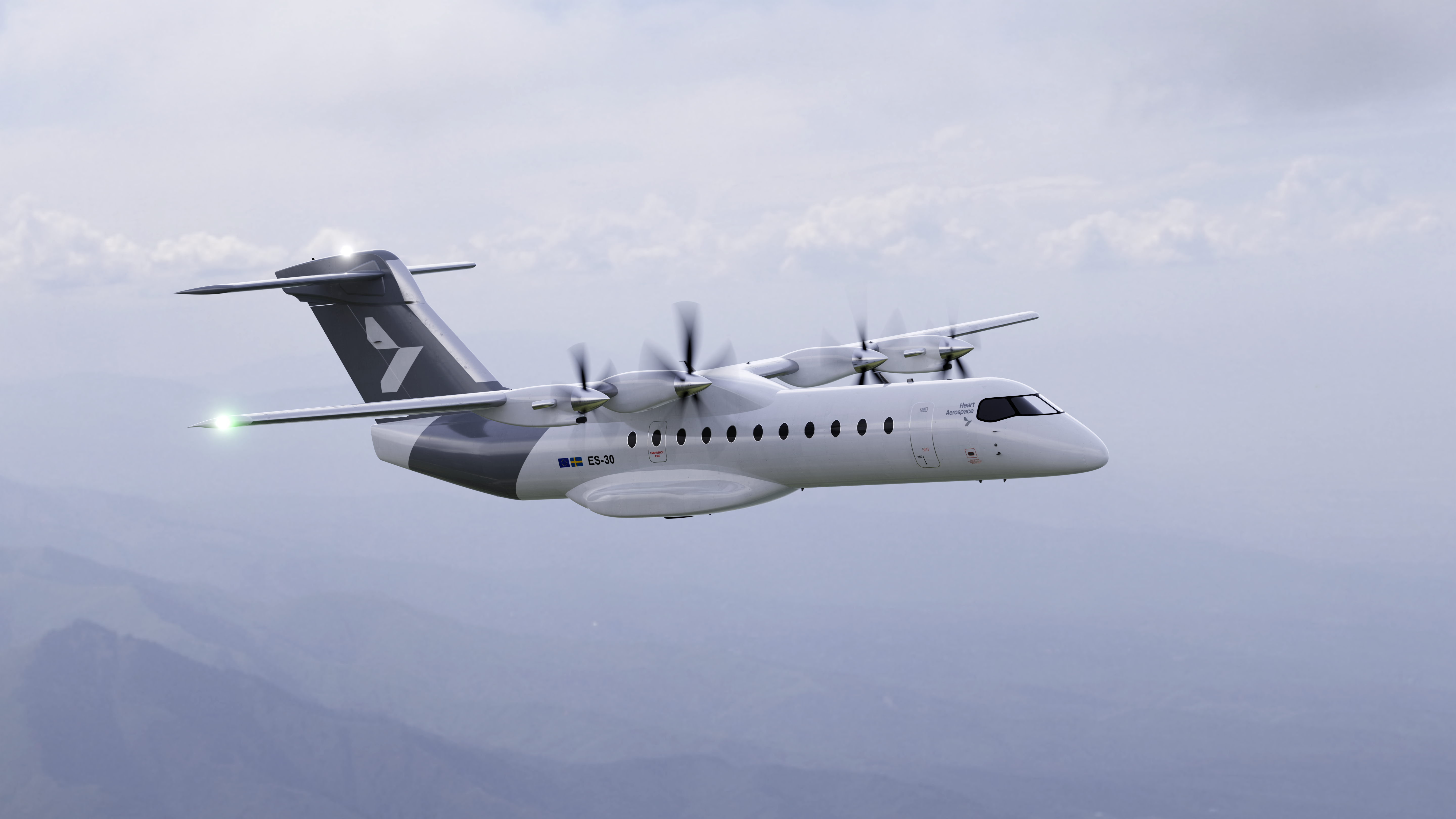
Heart Aerospace’EX-30. Heart Aerospace photo
Sweden’s Heart Aerospace’s EX-30 is envisioned to carry 30 passengers up to 120 miles on pure electric power, or 25 passengers to nearly 500 miles using a hybrid electric/turboprop combination. The company boasts about 0% CO2 emissions on shorter routes with just electric power.
Heart Aerospace expects to move their Heart X! testbed to New York State’s Plattsburgh International Airport in early 2025 to begin flight testing.
AirAsia, the Malaysian airline, will provide oversight “to shape the future of regional electric aviation” according to the manufacturer.
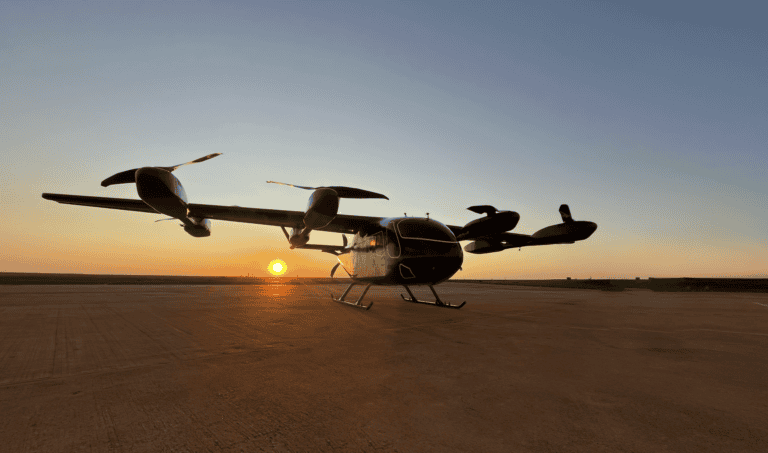
Embraer Eve Air Mobility
Eve Air Mobility is a multi-faceted concept which includes the Eve Air Mobility Aircraft, the services that allow operation of these aircraft, management of the fleet of aircraft, and air traffic management of the fleet of air taxis.
The Eve aircraft is an eVTOL aircraft powered by 8 electric motors. The company recently signed a Letter of Intent for up to 50 aircraft to be operated by Helicopter, Inc. Helicopter, Inc. has worked with Embraer on a simulated air operation in the Chicago area. Today, Eve Air Mobility reports that they have Letters of intent to operate almost 3,000 aircraft on “almost every continent”.
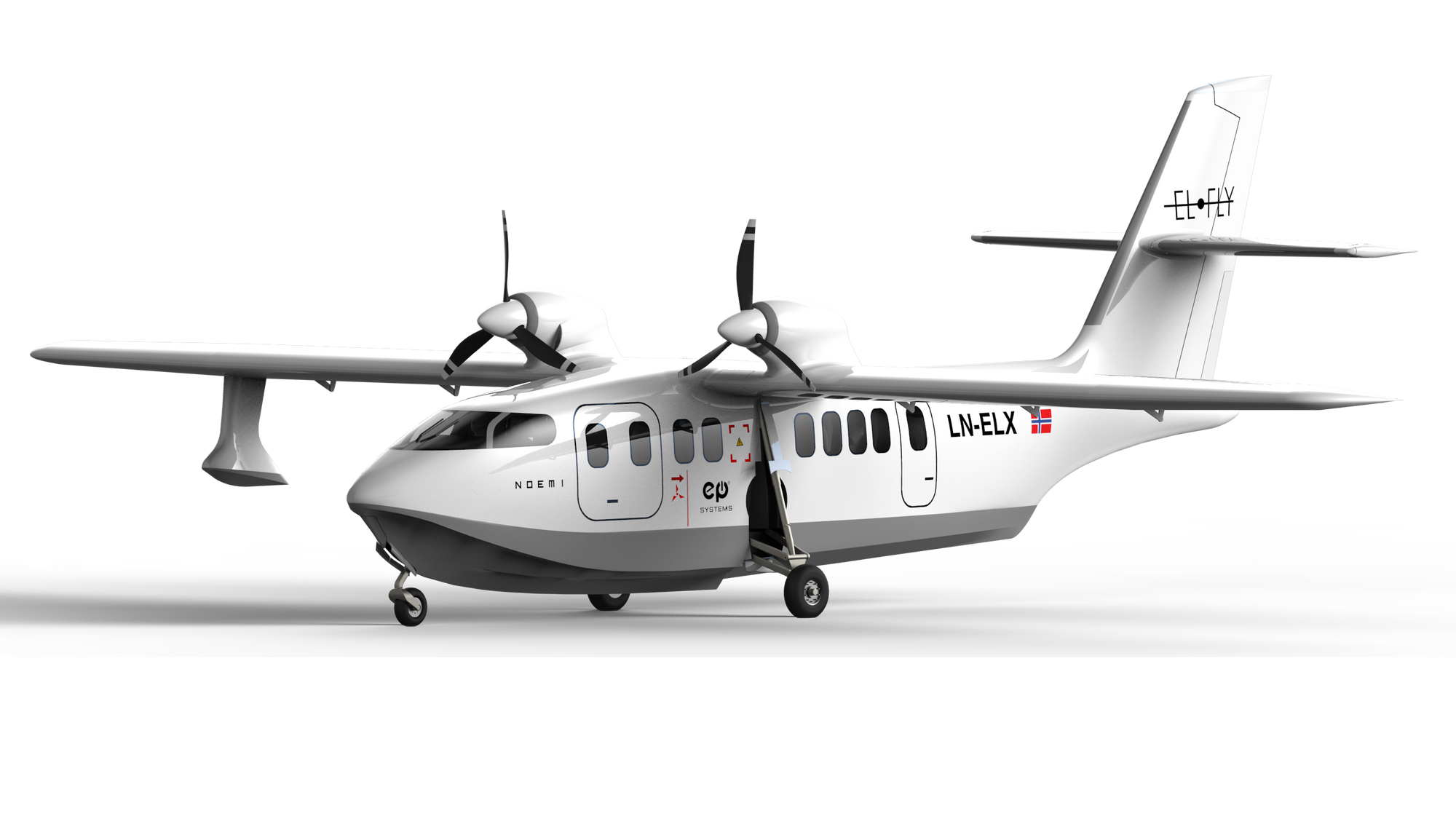
Elfly Noemi. Elfly photo
Norway’s Elfly 6 to 13 passenger all-electrically powered amphibian will be produced to ply between cities along Norway’s rugged fiord coastlines. The aircraft will be used for commuter/passenger flights as well as scenic tour operations. Nordic Seaplanes will operate the first 5 aircraft produced along Norway’s coast, and 10 more aircraft have been optioned for the seaplane operator.
Elfly sees many more potential geographic areas where city to city operations on waterfronts could be served by these green aircraft. One such is a Boston – New York City – Philadelphia routing. Another is between Seattle and Vancouver via Victoria. Passenger service with these aircraft could begin in 2030, only 5 years from now.
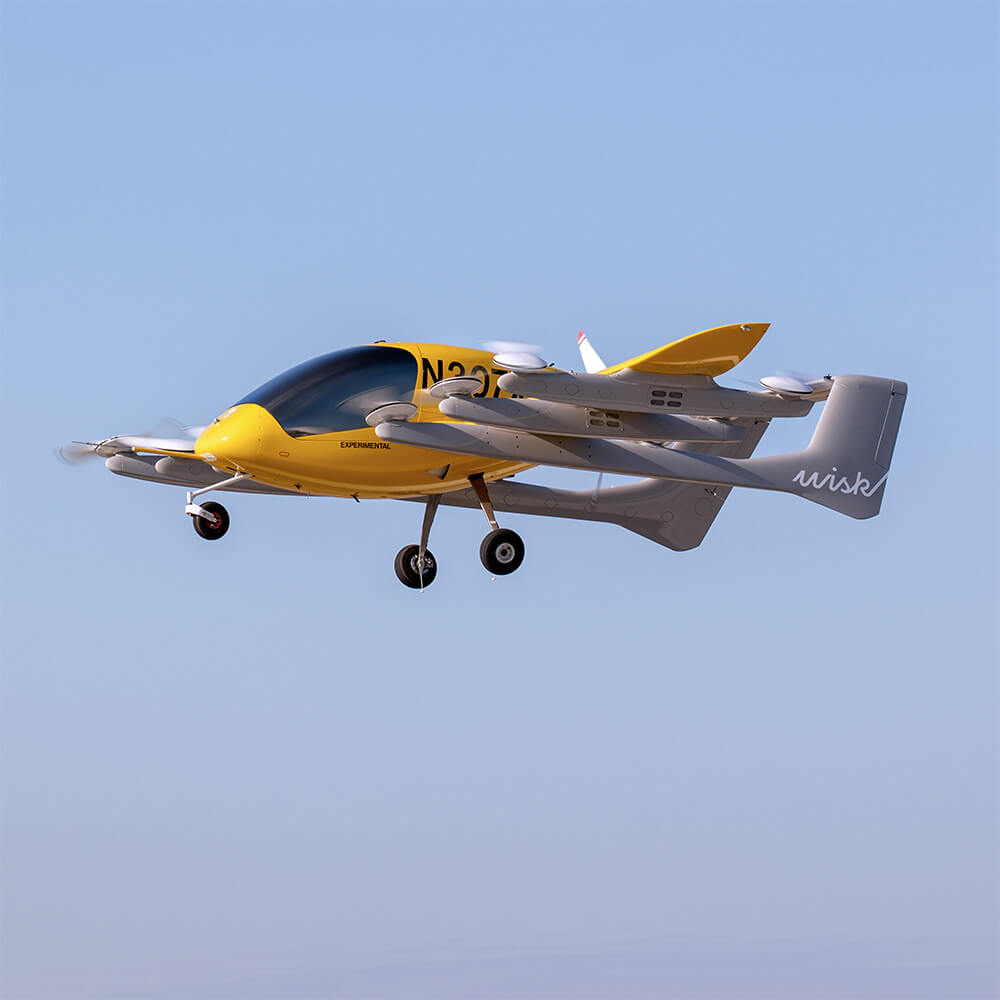
Wisk G-4/5 testbed. Photo by Ken Kula
Wisk is an American company headquartered in Mountain View, California and is a fully owned subsidiary of the Boeing Company. Their planned Generation 6 autonomous air taxi will be powered by 12 electric engines. This 4-seat air taxi will operate autonomously in urban areas with human flight controller oversight. Not only does Wisk make airplanes, but it will create the needed infrastructure and airspace design for them to operate in.
The company calls their concept “Advanced Air Mobility” and expects to be able to mover passengers quickly above vehicular traffic on roads. A series of 5 generations of test aircraft have been built to test and prove the company’s designs.
Not only will the airframes be “pilotless”, but the Wisk system utilizes pre-determined routes to work with existing ATC systems. The Greater Houston (Texas) Region, which includes three major airports, is partnering with Wisk to bring these autonomous air taxis to the city. Wisk has also signed an MOU with Airservices Australia to include their operations with Australian airspace.
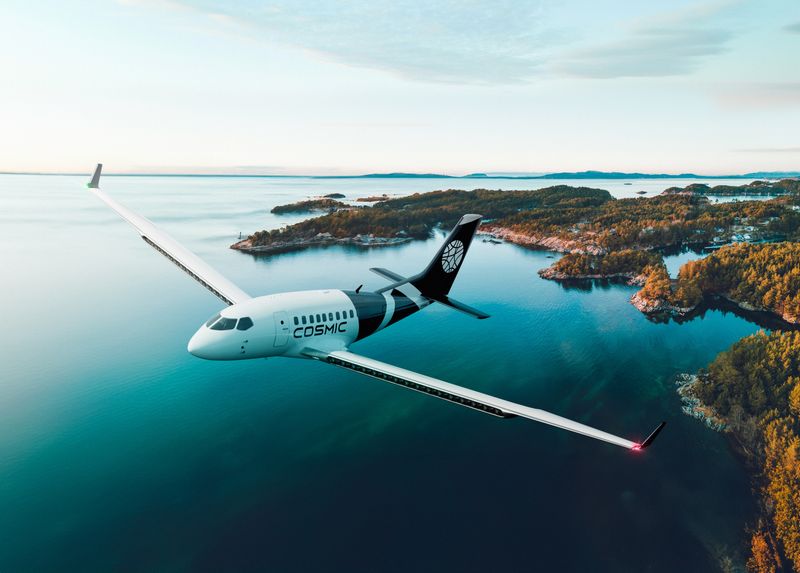
Cosmic Aerospace Skylark. Cosmic Aerospace photo
Cosmic Aerospace is based in Colorado. Their planned 24-passenger electric aircraft could have a range of near 600 miles on a single charge. Advanced aerodynamics and a design embedding electric engines offers the company their breakthrough range expectations. Several small test articles have been flown, proving their way to an eventual 32-motor design.
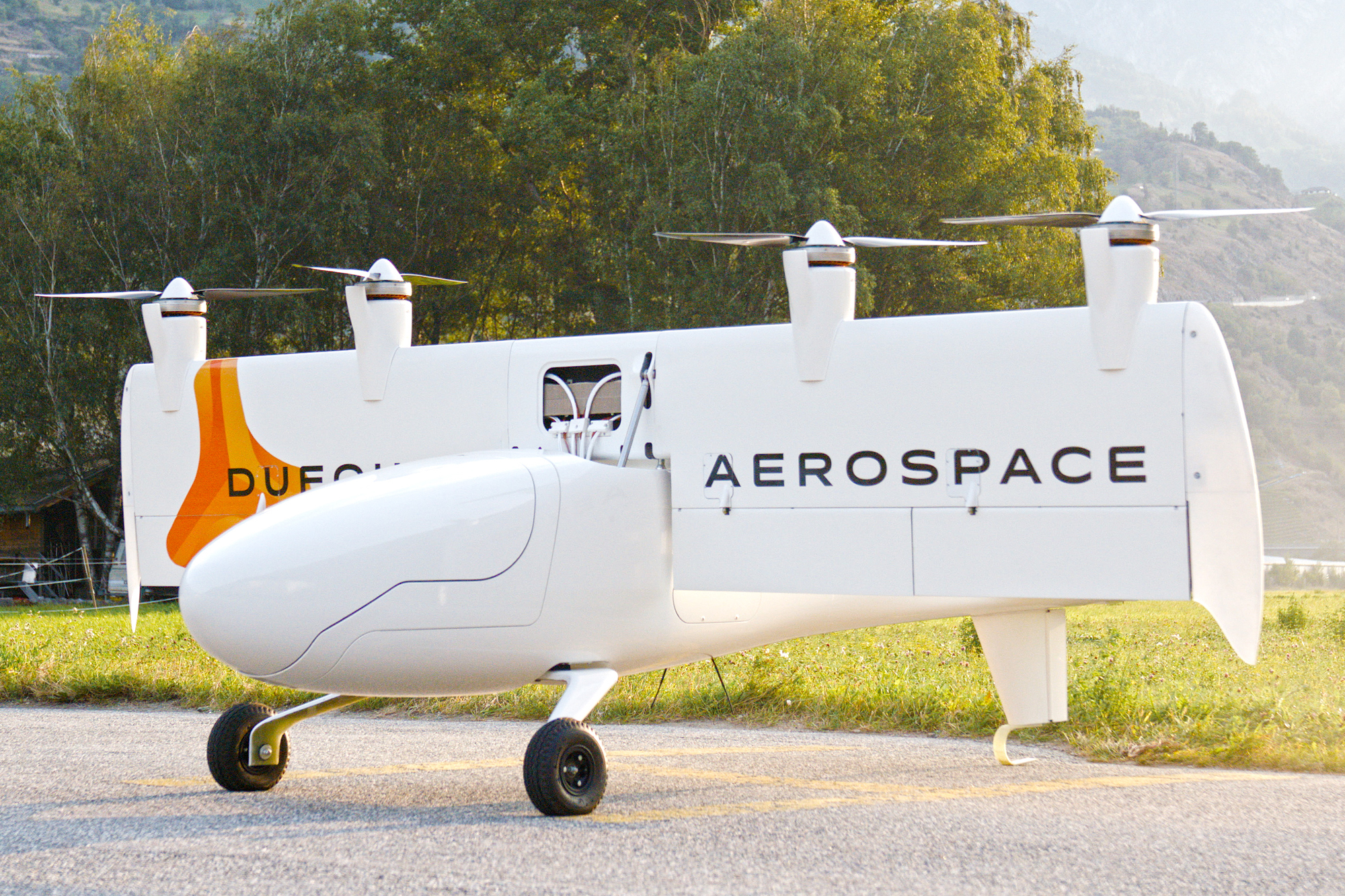
Dufour Aero2 eVTOL UAS. Dufour Aerospace photo
France’s Dufour Aerospace has developed this Aero2 hybrid electric cargo drone which utilizes a tilt-wing configuration for transition between horizontal and vertical flight. The cargo capacity is 44 pounds, with an endurance of up to 250 miles at around 100 miles per hour. Depending upon flight profiles used, endurance can be stretched to about three hours.
The design borrows technology from the Canadair CL-84, a 50-year old tilt-winged test aircraft. Besides delivery to non-urban areas, the drone can perform search and rescue and surveillance missions.
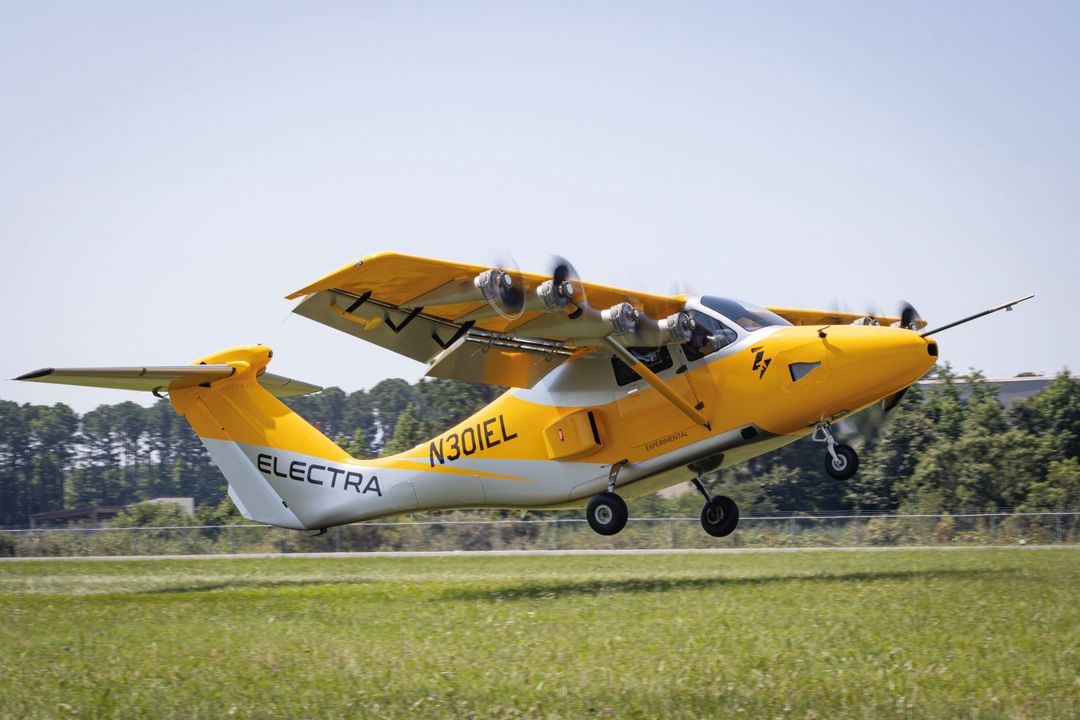
Electra Aero EL2 Goldfinch. Electra photo.
The EL-2 is a hybrid-electric eSTOL aircraft. The technology demonstrator is an ultra-short takeoff and landing project and is proving concepts for the eventual Electra EL-9, a 9-passenger commuter and logistics aircraft. The EL-2 was demonstrated to the U. S. Marines, Army, and NASA in 2024. The hybrid system utilizes a turbine engine to charge batteries, which in turn are used by the electric motors.
The motor and wing configuration uses the “blown flap” method to produce quiet, very short field flight operations.
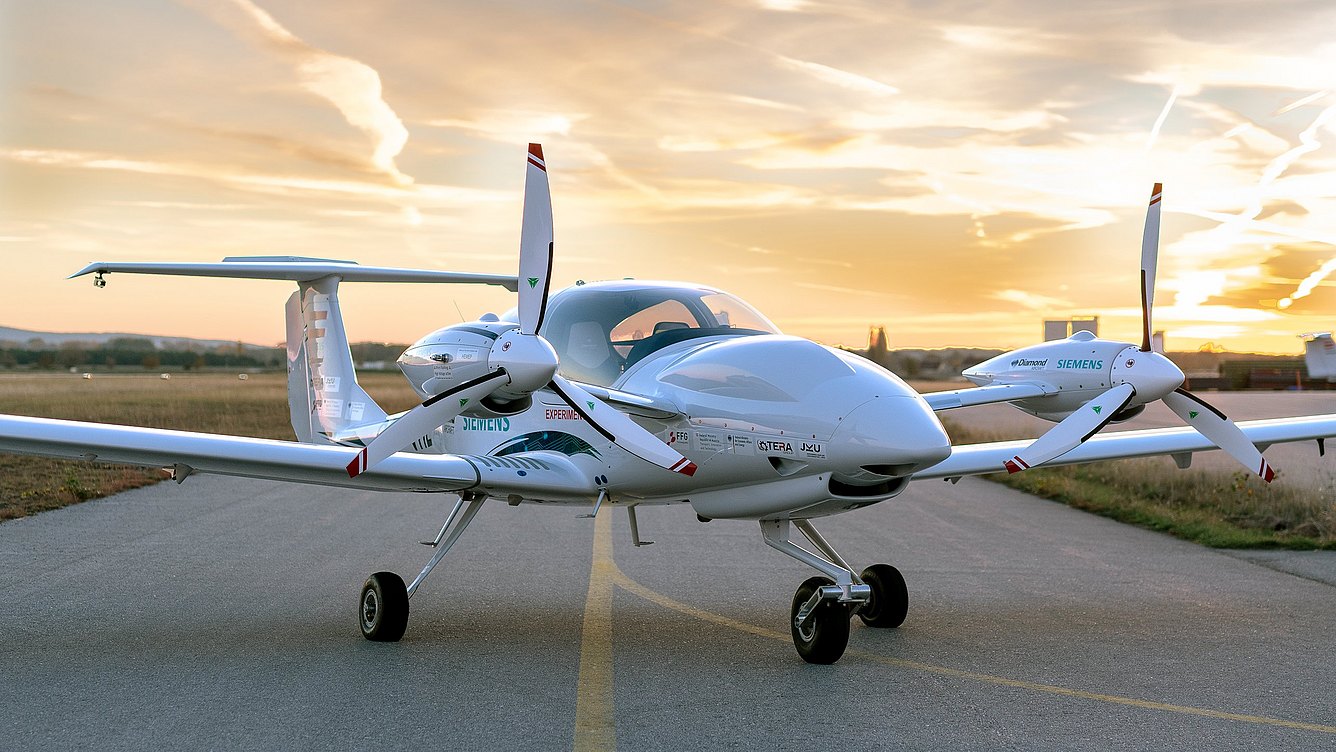
Diamond Aircraft HEMEP (Hybrid Electric Multi Engine Aircraft) Diamond Aircraft photo.
The Diamond Aircraft HEMEP hybrid electric testbed was developed from the company’s DA40 twin trainer. A single diesel engine generator powers a pair of independent electric pair of Siemens electric motors mounted on the forward fuselage. The powerplants can be configured in pure electric power mode, or the diesel engine powering the electric motors, or the generator powering the battery. Flying with pure electric power, endurance is 30 minutes, but with the generator and electric motors in a hybrid combination, a 5-hour endurance is available.
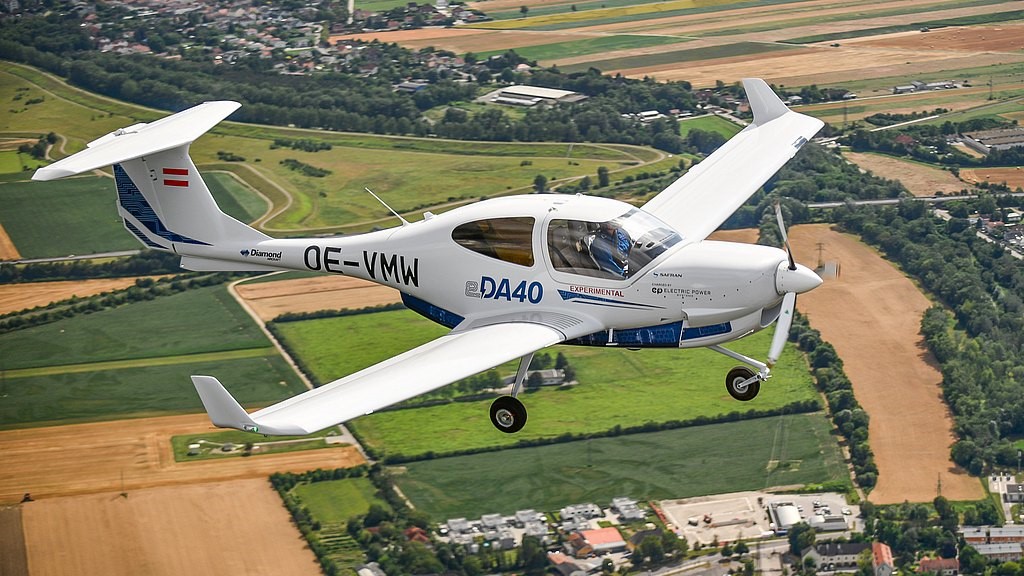
Diamond Aircraft eDA40. Diamond Aircraft photo.
Diamond Aircraft was founded in Austria but expanded with facilities in Canada and China. Diamond’s eDA40 is billed as a training aircraft with capacity for up to three people. Powered by a SAFRAN ENGINeUS electric motor, the trainer is envisioned as a first step into a three-part training system which includes a conventionally-powered DA40 and a twin-engined DA42V1.
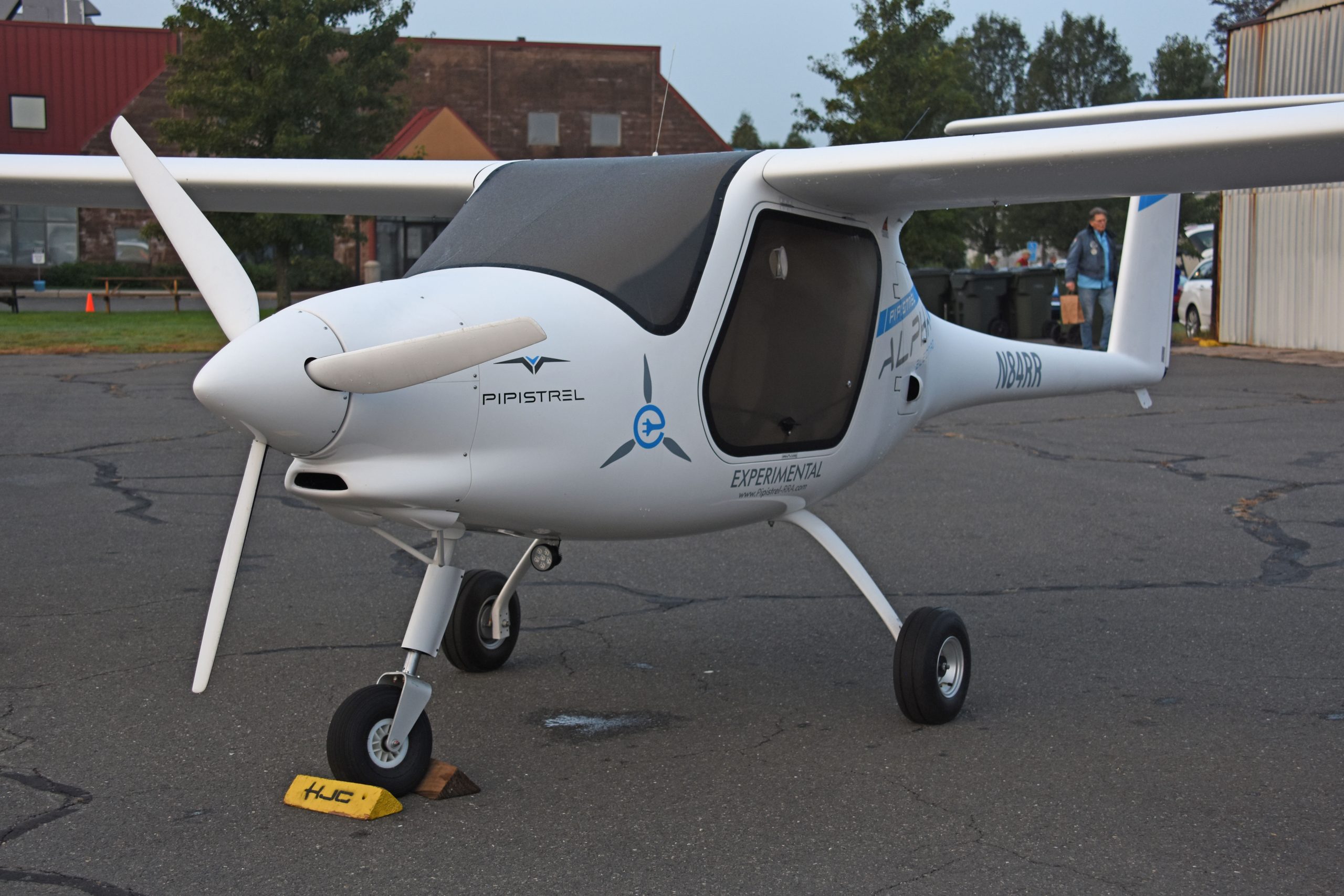
Pipistrel Alpha Electro. Photo by Ken Kula
The Pipistrel company is based in Slovenia, but has made inroads in North America. Their 2-place Light Sport category trainers are the Alpha Trainer and the Virus SW. Two motor glider models are the Taurus and Sinus. General aviation aircraft include the 2-place Explorer, a pair of Velis 2-seaters and the new 4-place Panthera. Pipistrel has fit electric engines into the Alpha, Taurus and Velis airframes. It is also producing an unmanned electrically-powered air cargo aircraft, known as the Nuuva 300.
The Alpha Electro was first operational in 2015 and utilized technology from an earlier European electric aircraft competition known as WATTsUP. The aircraft has an endurance of just over an hour, perfect for local flight training scenarios near an airport. The LSA is equipped with a ballistic parachute system in case of an emergency.
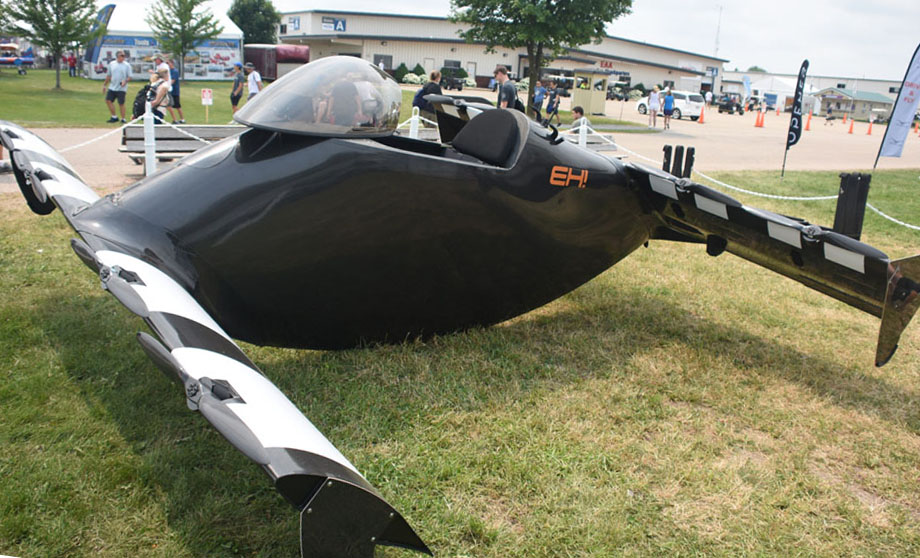
Opener Blackfly. Ken Kula photo
The Opener Blackfly is considered an ultralight by FAA standards, within the specified weight limits, with a maximum speed of 62 miles per hour and a 25-mile endurance. It is billed as a “personal air vehicle”. A prototype first flew in 2011. The design is a VTOL (Vertical Takeoff and Landing) aircraft powered by eight electric engines. There are now a series of three versions that have flown, at least one of which can be modified into a fresh-water amphibian. Operator weight has risen from 160 pounds in the first version up to 250 pounds in the current Version 3.
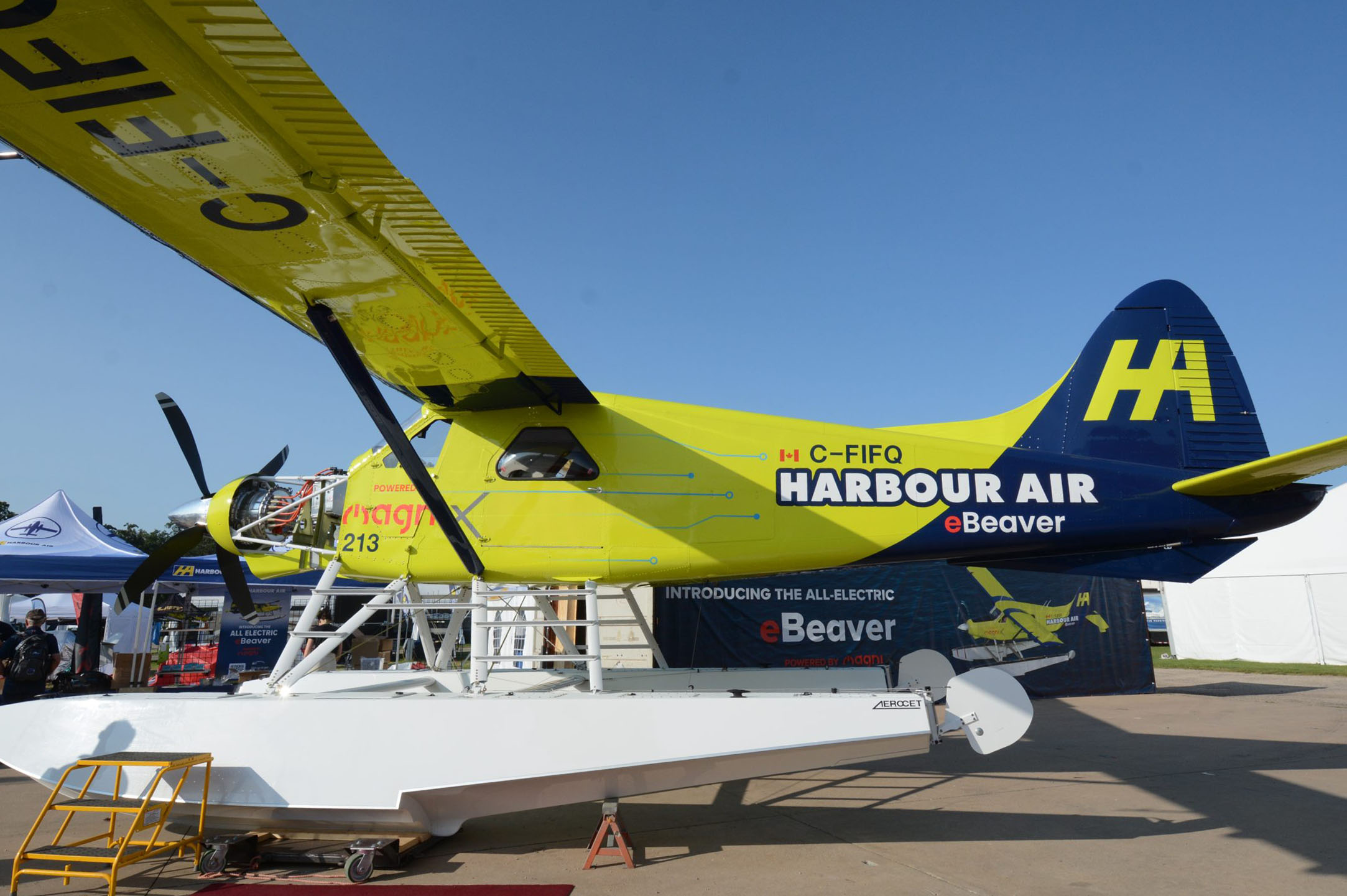
MagniX powered DHC-2, eBeaver. Ken Kula photo
Harbour Air is a major DHC-2 Beaver operator in western Canada and the U. S.. The Beavers have used piston radials, and more recently turbine engines. In 2019 a partnership between the airline and Washington-based magniX produced a fully electric aircraft, the eBeaver. The magniX is a 750-horsepower electric motor. Many of Harbour Air’s flights are short duration, and the eBeaver can carry six passengers for a 60-minute flight. After a 30-minute charge, the return trip can be made. With 4 passengers, the endurance extends to 74 minutes.
The magniX engine reduces takeoff time (equals a shorter distance) and is quieter than piston or turbine-powered versions of the aircraft. Harbour Air expects to modify all 12 of their Beavers, with the introduction of electric service during 2026 or 2027.

Exilir Aircraft. Elixir photo
The French aircraft manufacturer has opened a reassembly site in Sarasota, Florida for their two-place, carbon fibre aircraft. Much of the structure is created from competitive sailing design. New aircraft will be initially equipped with the low-emission Rotax 912is which uses unleaded gasoline. In 2023, the company produced an airframe which utilized a turbine engine which runs on Sustainable Aviation Fuel (SAF) – which is the so-called biofuel, and announced that a hydrogen engine could be adapted as that technology matures.
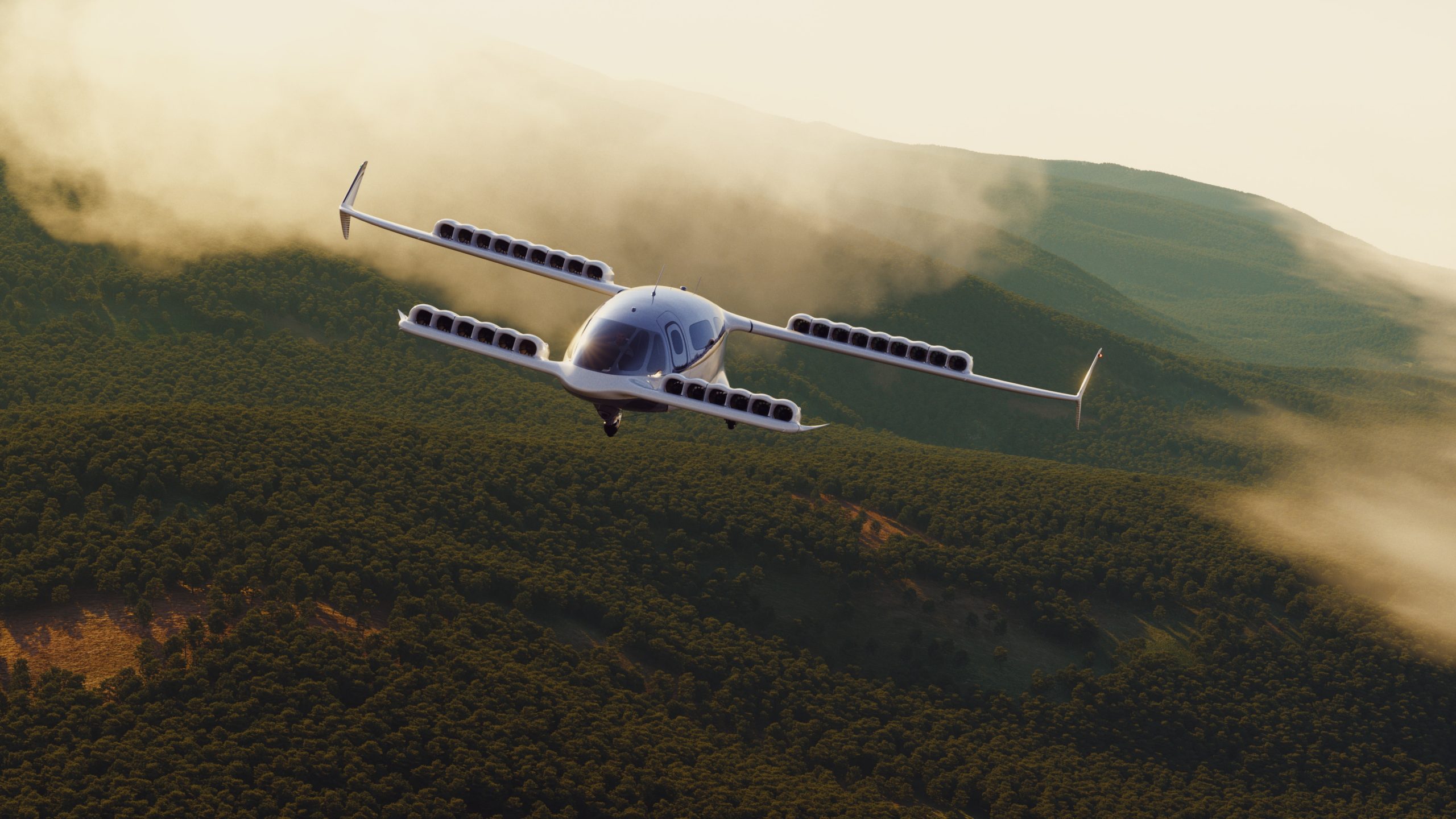
Lilium Jet. Lilium photo
The German company Lilium has built the Lilium Jet, a six passenger eVTOL transport powered by thirty electric motors. The motor placement is split between the fixed wing and the movable canards. The design can fit into present helicopter landing pads and is designed for “urban air mobility”.
Within the past year, the company was teetering at the edge of bankruptcy but has restructured and has won an order for fifty of their battery-powered aircraft from the Saudia Group. Initial deliveries and operations are planned for 2026.
























